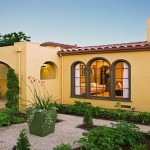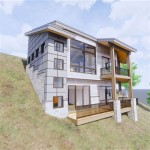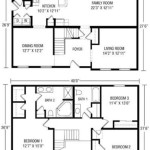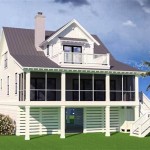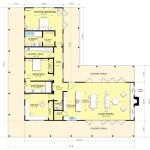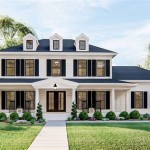Down slope house plans are architectural blueprints specifically designed for homes built on sloping land. These plans take into account the unique challenges and opportunities presented by the terrain, ensuring that the resulting structure is both functional and visually appealing. One common application of down slope house plans is in mountainous regions, where land is often uneven and steep.
Down slope house plans often incorporate features that optimize the use of the sloping terrain. For example, they may include split-level designs that allow for different sections of the house to be built at varying heights, creating a terraced effect. Other common features include garages and storage areas located at the lower levels, freeing up valuable space on the main living areas. These plans also prioritize maximizing natural light and ventilation, with large windows and skylights often incorporated into the design.
In the following sections, we will explore the various benefits of down slope house plans, discuss key design considerations, and provide tips for choosing the right plan for your sloping lot.
When considering down slope house plans, keep these key points in mind:
- Maximize views
- Accommodate slope
- Utilize natural light
- Create terraced levels
- Incorporate outdoor spaces
- Consider drainage
- Address foundation challenges
- Enhance privacy
- Embrace unique design opportunities
By carefully considering these factors, you can create a down slope home that is both functional and visually stunning.
Maximize views
One of the primary benefits of down slope house plans is the opportunity to maximize views. By carefully positioning the home on the lot and designing the floor plan accordingly, you can create a home that takes full advantage of the surrounding scenery. Here are a few key points to consider:
- Large windows and doors: Incorporating large windows and doors into your design will allow you to bring the outdoors in and enjoy the views from multiple vantage points within your home. Sliding glass doors that open up to decks or patios are a great way to create a seamless connection between indoor and outdoor spaces.
- Multi-level decks and balconies: Building a home on a slope provides the opportunity to create multi-level decks and balconies that offer different perspectives of the surroundings. This allows you to enjoy the views from various heights and angles.
- Elevated living areas: Placing the main living areas on the upper floors of the home will give you a better vantage point and more expansive views. This is especially effective in homes built on hillsides or mountainsides.
- Terraced landscaping: Terraced landscaping can be used to create level areas around the home, providing additional outdoor spaces with stunning views. Retaining walls can be used to create these terraces, which can be planted with gardens, trees, or other landscaping elements.
By incorporating these design elements into your down slope house plan, you can create a home that not only takes advantage of the sloping terrain but also provides you with breathtaking views that you can enjoy every day.
Accommodate slope
Grading and excavation
One of the most important considerations when building on a slope is how to grade and excavate the land to create a stable and level foundation for your home. This involves removing or adding soil to create a level building pad and ensuring that the slope around the home is properly graded to prevent erosion and water damage. Proper grading and drainage systems, such as French drains or swales, are essential to direct water away from the home and prevent flooding or other issues.
Foundation design
The type of foundation used for a down slope home will depend on the slope of the land and the soil conditions. Common foundation types for down slope homes include:
- Slab-on-grade foundations: These foundations are typically used on gentle slopes and involve pouring a concrete slab directly on the ground.
- Crawlspace foundations: These foundations are elevated above the ground, creating a crawlspace beneath the home. This type of foundation is suitable for moderate slopes and allows for easier access to plumbing and electrical systems.
- Basement foundations: Basement foundations are fully enclosed and extend below the ground level. They are typically used on steep slopes and provide additional living space or storage.
Retaining walls
Retaining walls are often used on down slope properties to hold back soil and prevent erosion. They can also be used to create level areas for patios, decks, or gardens. Retaining walls can be made from a variety of materials, including concrete, stone, or wood. The type of retaining wall used will depend on the height of the wall and the soil conditions.
Utilize natural light
Large windows and doors
One of the best ways to utilize natural light in a down slope home is to incorporate large windows and doors into the design. This will allow sunlight to penetrate deep into the home, creating a bright and airy atmosphere. Sliding glass doors that open up to decks or patios are a great way to create a seamless connection between indoor and outdoor spaces, allowing you to enjoy the views and natural light simultaneously.
Skylights and solar tubes
Skylights and solar tubes are excellent options for bringing natural light into areas of the home that may not have access to direct sunlight, such as bathrooms, hallways, and closets. Skylights are installed in the roof and allow sunlight to enter the home from above, while solar tubes are reflective tubes that channel sunlight from the roof to other areas of the home. Both skylights and solar tubes can provide significant amounts of natural light, reducing the need for artificial lighting during the day.
Light-colored interiors
Using light-colored paint, flooring, and furnishings can help to reflect and distribute natural light throughout the home. Dark colors tend to absorb light, making spaces feel smaller and darker. By choosing light colors, you can create a brighter and more inviting atmosphere in your down slope home.
Clerestory windows
Clerestory windows are tall, narrow windows that are placed high on the wall, near the ceiling. They allow natural light to enter the home without compromising privacy or sacrificing views. Clerestory windows are a great way to add natural light to rooms that have limited wall space or are located on lower levels of the home.
By incorporating these design elements into your down slope house plan, you can create a home that is filled with natural light, reducing the need for artificial lighting and creating a more comfortable and inviting living environment.
Create terraced levels
Terraced levels are a great way to maximize usable space on a sloping lot and create a sense of depth and visual interest. By creating level areas at different heights, you can create outdoor spaces that are perfect for entertaining, gardening, or simply relaxing and enjoying the views.
There are a few different ways to create terraced levels on a down slope property. One common method is to use retaining walls. Retaining walls are structures that hold back soil and prevent erosion. They can be made from a variety of materials, including concrete, stone, or wood. The height and length of the retaining walls will depend on the slope of the land and the desired size of the terraced levels.
Another way to create terraced levels is to use grading and excavation. This involves removing or adding soil to create level areas. This method is often used in conjunction with retaining walls to create a more gradual transition between the different levels.
Terraced levels can be used to create a variety of different outdoor spaces. For example, you could create a lower level for a patio or deck, a mid-level for a garden, and an upper level for a lawn or play area. The possibilities are endless, and the best way to design terraced levels is to consider your specific needs and the unique characteristics of your property.
In addition to creating usable outdoor space, terraced levels can also help to improve drainage and reduce erosion. By creating level areas, you can slow down the flow of water and prevent it from washing away soil and damaging your property.
Incorporate outdoor spaces
One of the best ways to take advantage of a down slope property is to incorporate outdoor spaces into the design. This can be done in a variety of ways, such as creating decks, patios, balconies, and gardens. Outdoor spaces can provide a place to relax, entertain, and enjoy the views. They can also add value to your home and make it more enjoyable to live in.
- Decks: Decks are a great way to extend your living space outdoors. They can be built on any level of the home, and they provide a perfect spot for grilling, dining, or simply relaxing. Decks can be made from a variety of materials, including wood, composite, and metal. The type of material you choose will depend on your budget, style, and maintenance preferences.
- Patios: Patios are another great option for outdoor living. They are typically made from concrete, pavers, or flagstone. Patios are more permanent than decks, and they require less maintenance. They are also a good choice for areas that get a lot of rain or snow.
- Balconies: Balconies are a great way to add outdoor space to upper levels of the home. They can be used for relaxing, enjoying the views, or simply getting some fresh air. Balconies can be made from a variety of materials, including wood, metal, and glass. The type of material you choose will depend on the style of your home and your budget.
- Gardens: Gardens are a great way to add beauty and functionality to your down slope property. They can be used to grow flowers, vegetables, herbs, and fruits. Gardens can also be used to create privacy screens, windbreaks, and other landscaping features. The type of garden you create will depend on your interests and the climate in your area.
By incorporating outdoor spaces into your down slope house plan, you can create a home that is both beautiful and functional. Outdoor spaces can provide a place to relax, entertain, and enjoy the views. They can also add value to your home and make it more enjoyable to live in.
Consider drainage
Proper drainage is essential for any home, but it is especially important for homes built on slopes. Water can quickly accumulate on a slope, leading to erosion, flooding, and other problems. To prevent these problems, it is important to carefully consider drainage when designing your down slope house plan.
- Gutters and downspouts: Gutters and downspouts are essential for directing rainwater away from your home. Make sure that your gutters are properly sized and installed, and that they are regularly cleaned to prevent clogs. Downspouts should be directed away from the foundation of your home and into a drainage system or dry well.
- Grading: The grading around your home should be sloped away from the foundation to prevent water from pooling. This will help to direct water away from your home and prevent flooding. You may also want to consider installing a French drain or other drainage system to help remove excess water from your property.
- Retaining walls: Retaining walls can be used to hold back soil and prevent erosion. They can also be used to create level areas for patios, decks, or gardens. When installing retaining walls, make sure that they are properly designed and constructed to prevent water from seeping behind them and causing damage.
- Landscaping: Landscaping can also be used to improve drainage around your home. Planting trees and shrubs with deep roots can help to absorb excess water and prevent erosion. You can also use mulch or other organic matter to help retain moisture in the soil and reduce runoff.
By following these tips, you can help to ensure that your down slope home is properly drained and protected from water damage.
Address foundation challenges
Building on a slope can present unique challenges for the foundation of your home. The slope can put additional stress on the foundation, and it is important to take steps to ensure that the foundation is strong and stable enough to support the home. There are a few different types of foundation designs that are commonly used for down slope homes, and the best type of foundation for your home will depend on the slope of the land and the soil conditions.
- Slab-on-grade foundations: Slab-on-grade foundations are typically used on gentle slopes and involve pouring a concrete slab directly on the ground. This type of foundation is relatively inexpensive and easy to install, but it is not as strong as other types of foundations and may not be suitable for homes built on steep slopes or in areas with poor soil conditions.
- Crawlspace foundations: Crawlspace foundations are elevated above the ground, creating a crawlspace beneath the home. This type of foundation is more expensive than a slab-on-grade foundation, but it is stronger and more durable. Crawlspace foundations are also easier to access for repairs and maintenance.
- Basement foundations: Basement foundations are fully enclosed and extend below the ground level. This type of foundation is the most expensive and difficult to install, but it is also the strongest and most durable. Basement foundations are a good option for homes built on steep slopes or in areas with poor soil conditions. They also provide additional living space or storage.
- Pier foundations: Pier foundations are typically used for homes built on very steep slopes or in areas with very poor soil conditions. Pier foundations consist of concrete piers that are driven into the ground and then connected by beams to support the home. Pier foundations are very strong and durable, but they are also more expensive than other types of foundations.
In addition to choosing the right type of foundation, it is also important to take steps to properly prepare the soil before constructing the foundation. This may involve grading the land to create a level building pad, compacting the soil, and installing drainage systems to prevent water from accumulating around the foundation. By taking these steps, you can help to ensure that your down slope home has a strong and stable foundation that will last for many years to come.
Enhance privacy
One of the benefits of building on a down slope is the potential for enhanced privacy. By carefully positioning your home on the lot and designing the floor plan accordingly, you can create a home that is secluded from neighbors and offers a sense of peace and tranquility.
Here are a few key points to consider when designing a down slope home for privacy:
- Set the home back from the street: One way to enhance privacy is to set the home back from the street. This will create a buffer zone between your home and the road, reducing noise and visibility from the street. You can also plant trees and shrubs along the front of your property to further screen your home from view.
- Use natural barriers: If your property has natural barriers, such as trees, hills, or rock formations, you can use these to your advantage to enhance privacy. Position your home behind these barriers or use them to create a natural buffer between your home and neighboring properties.
- Design the home with privacy in mind: The floor plan of your home can also be designed to enhance privacy. For example, you can place the bedrooms on the upper floors of the home, where they will be less visible from the street and neighboring properties. You can also design the home with a courtyard or other private outdoor space that is screened from view.
- Consider the orientation of the home: The orientation of your home can also affect privacy. If your property is on a corner lot, you may want to orient the home so that the front door faces away from the street. This will help to reduce visibility into your home from the street and neighboring properties.
By following these tips, you can create a down slope home that offers a sense of privacy and seclusion, allowing you to enjoy your home to the fullest.
Embrace unique design opportunities
Building on a down slope presents unique design opportunities that can be used to create a truly special home. By embracing the slope of the land, you can create a home that is both functional and beautiful. Here are a few ways to embrace the unique design opportunities offered by down slope house plans:
Create a multi-level home: One of the most common ways to take advantage of a down slope is to create a multi-level home. This can be done by building the home on different levels, connected by stairs or other means. Multi-level homes can be very dramatic and visually interesting, and they can also be very functional. For example, you could place the living areas on the upper level to take advantage of the views, and the bedrooms on the lower level for privacy. You could also create a lower level that includes a family room, rec room, or other bonus space.
Incorporate a walk-out basement: If your down slope property has a steep enough slope, you may be able to incorporate a walk-out basement into your home design. A walk-out basement is a basement that has a door or windows that lead directly to the outside. This can be a great way to add additional living space to your home, and it can also be used to create a separate entrance for a home office or other purpose.
Use the slope to create natural drainage: The slope of your land can also be used to create natural drainage for your home. By carefully grading the land around your home, you can direct water away from the foundation and prevent flooding. You can also use the slope to create a rain garden or other water feature that can help to manage stormwater runoff.
Take advantage of the views: If your down slope property has beautiful views, you can take advantage of them by incorporating large windows and decks into your home design. Large windows will allow you to enjoy the views from inside your home, and decks will provide you with a place to relax and entertain outdoors. You can also use the slope to create a tiered landscaping design that will provide you with different views from different levels of your property.
By embracing the unique design opportunities offered by down slope house plans, you can create a home that is both beautiful and functional. A down slope home can be a great way to enjoy the beauty of nature and create a truly special living space.










Related Posts

